In the early days of May 2019, a delegation from the state-owned China Ocean Shipping (Group) Company (COSCO), one of the largest in the world, visited the Uljanik Shipyard in Pula. The Uljanik delegates hoped that the Chinese might become the much desired “strategic investors,” rescuing them from bankruptcy. At that moment, Uljanik had been in deep agony for over a year: production had stopped because of the lack of money, customers had cancelled contracts and many workers had left the shipyard. Those remaining stood idle, receiving only the national minimum wage, paid by the Croatian government.
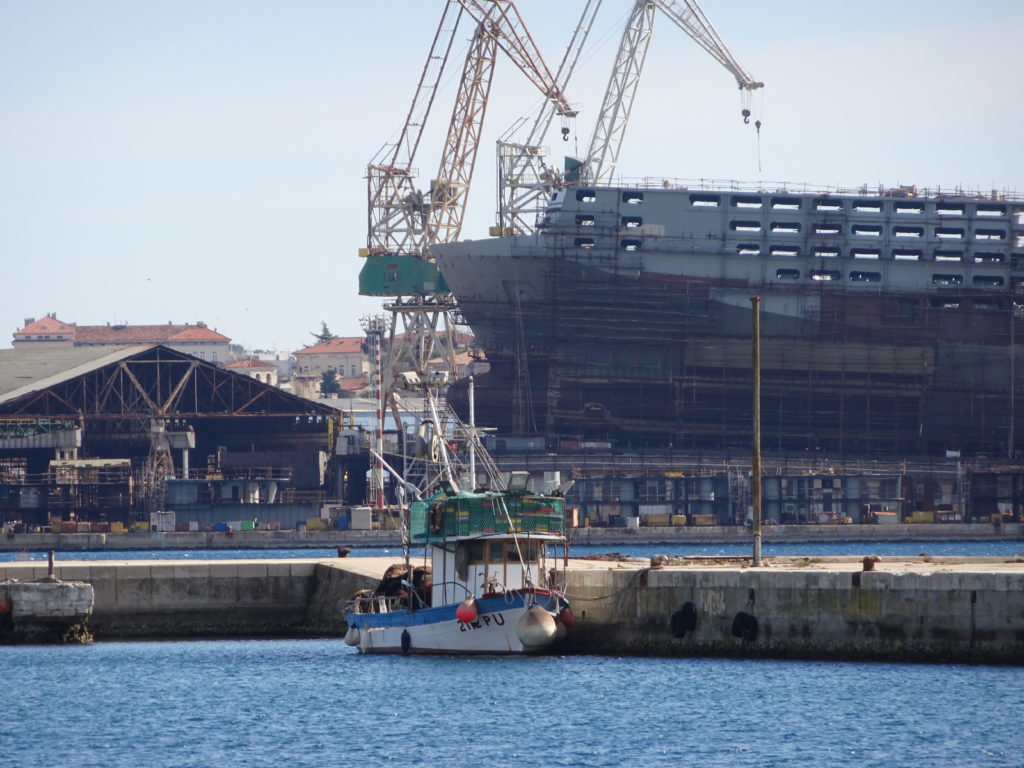
The Chinese delegation arrived after the Croatian Prime Minister Andrej Plenković had told his Chinese counterpart, Li Keqiang, about the sorry state of Croatia’s large shipyards. This discussion took place on the sidelines of the 16+1 summit – a Chinese led effort to strengthen business ties between China and East Central Europe – in Dubrovnik in early April 2019. The Chinese Premier, Li Keqiang passed a request on to COSCO, which only three weeks later dutifully dispatched a delegation headed by its CEO, Hu Wenming.[1]
The delegation met with the Croatian Prime Minister and then went on to visit the Third of May Shipyard in Rijeka and the Uljanik Shipyard in Pula, both owned by the Uljanik Group. The management hoped that as the Chinese had started to purchase stakes in Mediterranean ports, they might also find a place for the shipyards on their Belt and Road Initiative.
The local media, however, reported that the Chinese left with an awkward impression, namely, “when they visited, the Chinese thought they were walking through a museum of shipbuilding.”[2] A source from the shipyards told the journalist that the Chinese had never seen such old cranes because their own firm was a mere twenty years old. After several hours of talks in Pula, it became apparent that there was “no interest to invest on the side of the Chinese.” It seems, therefore, that the transformation of this – until recently proud and considered the jewel of Istria’s industry – shipyard into heritage had already begun, before it had even closed. The Uljanik Shipyard was becoming a museum despite not being one.
These recent developments in and around what used to be one of the oldest industrial enterprises in Southeastern Europe – the Uljanik Shipyard’s history goes back to its Austrian foundations in 1856 – are characteristic of the ambivalent position of industry in Istria today. On one level, it is still present, although in a process of long-term decline. On another level, it evokes a powerful memory because local people often associate industry with modernity and prosperity, so its demise becomes part of an overarching story of decline that is so prevalent in Croatia today. Yet, on a third level, industry is conspicuously absent, for as the interviewed manager of the “Mirna” sardine cannery in the town of Rovinj drily told the author of this essay: in the public image of the town, the factory is not visible despite its 140 years of tradition.
Indeed, visiting the tourist information websites of Istria (https: //www.istra.hr/en), or of the towns of Pula (https: //www.pulainfo.hr/) and Rovinj (https: //www.rovinj-tourism.com/en), one would hardly suspect that this region was – and to some extent still is – a place of industrial development. The most visible hint at industry on Istria’s website is an advertisement for BMW cars. The lack of industrial heritage in the self-promotion of the region is unsurprising. Tourists come to Istria in droves and they are unlikely to be in search of dilapidated factory buildings. Istria has sun and sea, a lot of old architecture, as well as excellent cuisine. This all sets it apart from places in the industrial heartland of Europe, like Germany’s Ruhr Area, and beyond, such as the Rust Belt in the USA. Arguably, these places are not graced with the same natural attractions. Thus, the preservation and showcasing of their unique industrial heritage is a way of promoting these places on the tourist map.[3]
Yet the industrial past is not completely denied in Istria. Rovinj’s official tourism website, for example, contains a brief history of the town, in which the visitor learns that:
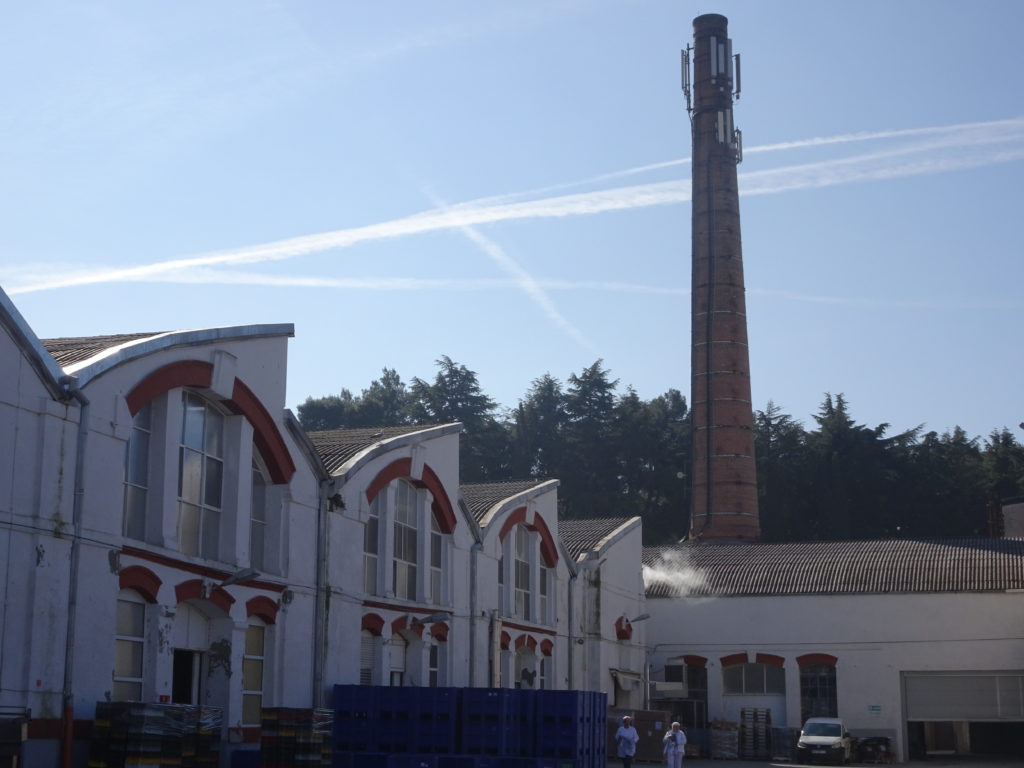
“In 1816 streetlights were introduced, from 1819 to 1840 the old school, in 1847 a steam mill for pasta production was built, in 1850 the Commerce-Crafts Chamber for Istria was founded, in 1853 a lighthouse on the island of St. John was built, from 1854 to 1865 – a theatre, in 1852 – cement production facility, in 1859 – Large pier, in 1872 – tobacco factory, in 1878 – wax factory, in 1882 – glass and sardine factory, in 1888 – hospital, in 1891 – Institute of marine biology. Rovinj was connected by a railway line; the first train arrived from Kanfanar in 1876. The port of Valdibora was expanded, in 1905 town gas lights were introduced, and in 1906 the town telephone.”[4]
Thus, the establishment of industrial enterprises and of the necessary infrastructure is mentioned and integrated here into a narrative of emergent modernity. What is conspicuous, however, is the gap between the written word and visual self-promotion, where industry is left in the dark. This occurs despite the old buildings of the sardine cannery and the former tobacco factory in Rovinj not only possessing architectural value but also being close to the old town. It is this gap that creates, but also manifests a tension: between lived experiences and authoritative narratives, between popular self-perceptions and the commercial appropriation of the past. The tourism-based construction of local and regional identity revolves around a valorization of the surroundings, but fails to explain to visitors, and even less so to the local population, what they can see. This is even more evident in the case of Pula, where the official promotion materials are silent as regards the industrial heritage of the city, not even attempting to inform visitors as to why they can see large unfinished ships next to a Roman temple on the city centre’s main square – a quite unique feature of Pula. Only one industry-related attraction is listed on the tourist office website:
“Lighting Giants – Pula’s New Attraction

‘Lighting Giants,’ Pula’s new attraction, is a unique project in the world of lighting cranes of an operating shipyard. Dean Skira, the world-famous lighting designer, with the help of sponsors and workers of Uljanik Shipyard, has lit up the shipyard’s iconic cranes, a characteristic symbol of Pula. ‘Lighting Giants’ have a sophisticated remote-control system of lighting and scenography, and can be illuminated with 16 thousand different color combinations. You can enjoy this spectacular show and lighting display every evening from dusk until 10 pm, during the summer until midnight.”[5]
Pula’s tourism website also mentions the value of the Austrian architectural heritage but limits its discussion to the City Market Hall, which is described as a place where one can “feel the spirit of the Mediterranean.“[6] So again we see a generic association with the sea and the notion of Mediterraneanity, rather than a place-specific architectural history. No word is mentioned of the buildings from that period, which were – or still are – mainly used for industrial purposes. In the case of Uljanik, more than 160 years of tradition are aestheticized into a light show that has little in common with elements that have shaped the history of this place, i.e. labour and its products (ships). Even the timing of the show is telling, as it symbolically moves the shipyard over the boundary from work time into the leisurely evening hours. This is reminiscent of the problematic consequences of the musealization of industrial heritage, which Christian Wicke has highlighted in relation to the German Ruhr Region:
“The material remains of the industrial era have become strongly aestheticized objects, imparting few insights into the environmental and labor exploitation in the Ruhr’s history, which leaves the region’s industrial heritage appearing somewhat de-historicized.”[7]
The musealization of heritage tends to create similar problems to the tourist promotion of regional identities elsewhere: it levels out history, often ignores past conflict and struggle, is silent about the dark sides to beautiful architectural monuments, and it simplifies legacies, identities and histories which in real life are recalled in much more complex ways than in a tourist brochure.[8] Touristification showcases certain elements of a region’s identity, ignores others, and sometimes even manipulates local historical heritage so as to render it a marketable product.
A Quick Glance Towards Rijeka
Across most of Istria, industrial heritage is left alone and is not presented as valuable, with the partial exception of the architectural (but not the work!) heritage of coal mining in Labin and Raša.
The City of Rijeka, to the northeast of Istria in the Bay of Kvarner offers an interesting counterexample. One reason for this is the oversized importance that industry has played in the city’s development. Furthermore, Rijeka has struggled to become a major attraction for tourists to date, in contrast to Pula. The rapid collapse of industry after the end of socialism left a traumatic mark on the city’s consciousness, which is one motivation for the ongoing re-appropriation of the material legacies of the industrial age. The city is still proud of its left political leanings and its proletarian traditions. The industrial heritage is also very visible today, often as scars on an otherwise picturesque cityscape
Another important difference with the rest of Istria is the presence of activist stakeholders. The City Museum in Rijeka, for example, has already displayed a systematic interest in the industrial heritage of the city for quite some time. In 2014 the museum edited a book with photographs and short histories of industrial enterprises established under Habsburg rule. The English translation of the title of the volume, R.I.P., frames it as a tombstone. In his introduction to the book, the museum director Ervin Dubrović alluded to evocations of a better past produced by the remnants of this past today. Industrial buildings have transformed from being signs of success to mementos of decline:
“This book portrays the history of Rijeka’s industry but also creates a sad image of Rijeka’s downfall. (… ) Rijeka’s Industrial Past is not only about something that we experience and something we refer to as heritage, but it is also about archaeology, about remnants and fragments.”[9]
Another important actor is the Centre for Industrial Heritage, established in 2013 at the University of Rijeka. It carries out “promotional projects, studying and protecting industrial and other heritage.” Its main mission is the “valorisation and appropriate presentation of cultural heritage in an interactive, innovative and multimedia-based way.”[10] Based on such initiatives, the City of Rijeka included its industrial heritage in the bid book for the competition to be Europe’s Capital of Culture in 2020. According to the bid book, “Rijeka’s industrial heritage forms an important chapter” in the city’s genius loci, and the city is proud of it. “Rijeka’s identity is built on its industrial heritage, which becomes a platform for a number of programmes and an important visitor resource as well.” This heritage should be valorized not for the purpose of nostalgia but as something “igniting new meaning and a new narrative” and attracting tourists in the process.[11] The bid was successful, and as a consequence, industrial heritage enjoys much more attention in Rijeka than anywhere else in Croatia.
The official Rijeka 2020 Cultural Capital of Europe programme addresses the crucial problem of deindustrialization and its social consequences head on, stressing that Rijeka is a pertinent example. One of the main program areas is called “Dopolavoro” – “After Work”:

“Rijeka is a city of labour. Population growth depended on industry, the port and their related work opportunities. Most of those workplaces have disappeared over the last two decades. Rijeka has been deindustrialized, but it has never transformed from an industrial centre to a centre of knowledge. Rijeka and its immediate cultural surroundings are a region with one of the highest unemployment rates in Europe, with a devastating unemployment rate among young people. Precarious work has become a rule in the European south.”[12]
Deindustrialization, that is, the long-term decline of manufacturing, is the main social process that makes the question of industrial heritage so urgent. Rijeka, previously one of the most – perhaps even the most – industrialized places along the eastern Adriatic coastline is a case in point: after the end of socialism, one major factory after the other closed its doors. Most recently, this included the “jewel” in the crown of local manufacturing, the Third of May Shipyard (owned by Pula’s Uljanik). This left not only many workers out of work, who then struggled to find other jobs in Rijeka and who consequently often decided to move abroad; it also left behind many buildings and sites previously used for industrial production but for which hardly any alternative use could be found, except as dramatic locations for raves. They are too big and too derelict to be easily transformed into something else, while ownership is also sometimes dubious. Rijeka is not Liverpool or Hamburg, where large amounts of capital flow in, transforming disbanded ports and factories into lofts, luxury apartments, ateliers, and nightlife districts.
The ambivalent nature of the material legacy of industry is evident in Rijeka’s 2020 self-promotion. While one flagship programme deplores the decline of industrial labour, another depicts industrial heritage as an undesirable remnant of an age that has left deep scars on the environment. The Sweet & Salt programme explores the links between the sweet water of the Rječina river and the salty waters of the Adriatic:
“No other coastal city on the Adriatic has this feature, and in Rijeka the river has become a hostage of industry. Five kilometres of space where the sea meets the Rječina canyon has been taken over by the port, active and abandoned industrial objects, parking lots, warehouses, a bus garage, and a water purification plant. That space was not used for leisure or contact with nature at any point in the 20th century.”[13]
This points to one of the main questions of industrial heritage: who can (re-)claim it; and which stories can be told about it? While class and social struggles are often disregarded in musealization efforts, they are very much present in these efforts themselves. Should the artefacts of industry be preserved and showcased as testimonies of workers’ experiences? Do they speak mainly of the past success of courageous entrepreneurs and of engineering prowess? Is it a framework for the creation of new housing and leisure facilities for the middle class, for whom industry is anything but a distant memory? Does it stand for environmental degradation or for the failed developmental project named socialism? The material legacy of industry does not speak out alone, it needs to be integrated into narratives linking past and present. In the above-mentioned volume “R.I.P.,” the author presents Rijeka’s industrial ruins as symbols of the commercial age, of the city’s entrepreneurial spirit and its connections to the world:
“I hope this book will not be yet another remnant of Rijeka’s industrial heritage […] Rijeka’s Industrial Past (R.I.P.) is a book about daring ventures of entrepreneurs from Rijeka and abroad who made Rijeka a significant industrial, commercial and transport centre within the Austro-Hungarian Monarchy […] Tremendous economic progress and the technological rise driven by an open world view led the late 19th century Rijeka to the summit of economic importance and we can safely conclude that Rijeka’s industrial era represents the city’s modern renaissance.”[14]
Industry as the emblem of modernity helps to link locales with larger stories of modernity and globalization. In places that have been experiencing sudden deindustrialization, industrial heritage can become a place of memory of a past to which people ascribe meaning and relevance; a past during which they felt they were connected to the wider world and contributed to the building of a better future. “Industrial landscapes were once the proud symbols of human progress and modernity,” according to the authors Steven High and David Lewis.[15] Industry always produced an excessive abundance of meaning – much more than, for example, the service sector can do. The same holds true for its remains. Industry has had its own poetics reflected in the multiplicity of significations pinned on its heritage.
Rijeka is a good example of industrial heritage’s potential to prompt contradictory interpretations. Steven High and David Lewis, drawing on the example of North America, point out how “industries that once symbolized modernity and progress have come to represent an antiquated and polluted past that should be put behind us.”[16] Yet the example of Rijeka and other post-socialist places leads us to modify this assertion, at least insofar as it applies to Eastern and Southeastern Europe: there is no linear process of devaluation, there are rather parallel narratives, in some of which industry serves as a nostalgic memento of a better past, while in others as the powerful symbol of something that went terribly wrong.
Back to Pula: from a Place of Work to a Place of Memory?
Highlighting the ambivalent nature of industrial heritage efforts and of attempts to turn them into commercial projects, Stefan Berger and Paul Bickering stress that “The hard toil, the exploitation, the dangers, the sweat, the disappointments and the dirt of the work that was once performed at those sites are eschewed.”[17] In Pula’s Uljanik Shipyard, the memory of “the hard toil” is still very present – and many workers long for this experience. Yet, since late 2017, when spectacular losses were revealed, the shipyard has practically come to a standstill. In mid-May 2019, finally, the Pazin Commercial Court opened bankruptcy procedures. So at the moment of writing, the Uljanik Shipyard sits in a dangerous twilight zone between being a place of work and of memory. There are no signs in sight of a happy ending to the bankruptcy proceedings and a phoenix-like recovery.
The foreseeable end to more than 160 years of shipbuilding tradition in Pula gives new urgency to the question of how this history shall be commemorated. To date, Uljanik has been a case in point for the ambivalence towards approaches to industrial heritage prevalent in Croatia, and in much of post-socialist Europe. On the one hand, industry is very present in popular memories. On the other hand, it is almost completely absent in public representations of the past. The transition from communicative to cultural memory (pace Assmann) has not yet happened, or shall we say: experience has not yet been turned into history.

The foreseeable end to more than 160 years of shipbuilding tradition in Pula gives new urgency to the question of how this history shall be commemorated. To date, Uljanik has been a case in point for the ambivalence towards approaches to industrial heritage prevalent in Croatia, and in much of post-socialist Europe. On the one hand, industry is very present in popular memories. On the other hand, it is almost completely absent in public representations of the past. The transition from communicative to cultural memory (pace Assmann) has not yet happened, or shall we say: experience has not yet been turned into history.
But who will produce this history? The past was always present in Uljanik and in its self-image. When the Uljanik directors sought out government money – one of their prime tasks both during and after socialism – they rarely failed to highlight the long tradition of the shipyard, going back to 1856. Without the shipyard, there would not have been a modern Pula – a sentiment that should impress on the government the fear that the reverse might also be true. Over the last couple of decades, the shipyard was not very good at making a profit – in fact most of the time, it recorded a loss. But it generated a great deal of meaning that was deeply rooted in the past. Its age and resilience, despite political ruptures, served as major legitimizing tools for the shipyard and its people. Milestone birthdays were celebrated, on two occasions with commemorative coffee table books (1986 and 2006). Everyone was looking forward to celebrating Uljanik’s 170th birthday, set to take place in 2026, as one of the oldest continuously existing factories in Southeast Europe.
The past also regularly comes up in discussions with workers. They do not immediately recall the long history of the shipyard, but they do display a clear consciousness of the shipyard’s historically important function for the city of Pula and the region of Istria. Many of them have internalized the adage of “if Uljanik coughs, Pula will get sick.” Almost uniformly, current (i.e. when interviewing them) and former workers articulated a sentiment of pride in the shipyard and its maritime industrial products. Few presented the experience of work in the shipyard as something unpleasant and meaningless. What emerged from the interviews is that the employees clearly saw their “former” work in the shipyard not only as a job resulting in a salary, but as something that gave meaning to their individual lives. Individual experiences gained meaning and relevance because they were part of a larger whole, of a community and of the world of modernity.[18] Former employees articulated ownership of a past of which they felt proud.
At present, these people come face-to-face with the material remnants of these experiences in their daily lives but are simultaneously cut off from them. The experiences of actual industrial work are still too fresh to cool down and become memory; the factory buildings and many other things in Pula that remind them of the shipyard and its former glory, point to a past that many people do not want to become history. There is no closure here. In the case of the Ruhr Area, Berger and Pickering argue that the “successful mastering of de-industrialization […] was arguably also the precondition for the valorization of industrial heritage in the region.”[19] So if the reverse is also true, then the odds for public appreciation of the industrial heritage of Pula and of Istria or Croatia at large are poor. Here, deindustrialization came so rapidly and unmitigated so as to have been commonly perceived as a catastrophe. Empty or derelict factory buildings and the material artefacts of industrial infrastructure only provoke narratives of decline and loss.
In contrast to Romania, for example, industry is not tainted by its association with communism in the public mind in Croatia.[20] Only a few people applauded its demise and were happy for its heritage to be bulldozered. The association of industry with progress and modernity is too strong, not only as abstract categories but in the real-life experiences of “ordinary” people. When in 2018, rumours spread in Pula that a newly-found “strategic investor” for Uljanik was only interested in its land and wanted to turn it into a luxury marina and hotel complex, the inhabitants of Pula were in uproar. Industry enjoys much more prestige than the service sector, not least because it offers jobs that people find meaningful (in the end, the Uljanik investor appeared to lack money and was replaced by another who also failed to invest).
But once the last hopes of a shipyard revival are lost, what will happen to its built heritage? As David Kideckel stresses, heritage, very much like identity, is not a “condition, but a process,” and both are constructed.[21] The peculiar quality of architectural heritage is its double nature: it is manifestly real in material terms. But to become heritage it must also become an object of narratives that produce identities. For that, authors are necessary. So who might be the agents who turn Uljanik into heritage?
For the time being, the question is not so much who, but whether there will be any actors at all who can preserve Uljanik’s industrial heritage and showcase its history. For activities from below to emerge, the experience of plant closure is too painful and fresh. High and Lewis commented that “these physical remains [of former factories] serve as reminders that workers who once stood at the centre of local life are now relegated to the periphery.”[22] So will workers, once shipbuilding becomes history, come to rescue these remains and thereby re-actualize painful memories? Very often, heritage initiatives come from the middle class and/or activists with a political agenda. In Pula, suggestions by local scholars to initiate the preservation of Uljanik’s heritage, which also consists of a rich company archive, have gone nowhere so far – the local government mainly relies on tourism and apparently does not see enough tourist value in Pula’s industrial heritage. The example of the Ruhr shows that only once influential stakeholders have been won over, can former industries be turned into heritage.
At this present moment, the question of what Uljanik’s future will be, has not yet been decided. Will it again become a place of industrial work, or turn into a place of industrial memory? Whatever the final outcome, one thing is already clear: the shipyard has so far failed to shape its own heritage. There is no museum of shipbuilding attached to the shipyard, despite some past ideas drafted by the management. This essay’s author saw, when he met the then director for public relations, a sketch of exhibition rooms, where blueprints and models of ships and other paraphernalia would be displayed. But even this came to nothing, not to speak of any large-scale effort to preserve the architectural heritage of the yard. The former main administrative building, a massive construction from Habsburg times in a slightly Moorish style, has been left almost empty and slowly falling apart.
Conclusion
David C. Harvey highlights that “heritage is, first and foremost, a process.”[23] Laurajene Smith adds that heritage is a “process of engagement, an act of communication and an act of making meaning in and for the present.”[24] In these processes, different actors – on the grassroots level as well as more powerful ones – are engaged in and negotiate meanings of the past, which pasts shall be on display and which ones silenced. Heritage making can, and often does, involve national or even international actors – in 2005, the Council of Europe passed the Framework Convention on the Value of Cultural Heritage for Society (the so-called Faro Convention)[25] and the European Union finances initiatives in this area. Yet, it is the concrete place that matters most as tangible heritage has a localized materiality.
Similar things can be said about the process of deindustrialization, which also involves negotiations and is highly place-dependent. Christian Wicke reminds us that “Industrialization and deindustrialization […] are uneven processes,”[26] and so is the transformation of past industries into heritage (or not). In Istria today, deindustrialization is very much an ongoing or at least recent development, as the recent closure of the Uljanik Shipyard illustrates. It is a fresh experience linked to the travails of post-socialist transformation. The decline of industry entailed not only job losses, unemployment, social displacement and frequently, a decline in the physical infrastructure. It also involved a paradigm shift in the (self-)image of society and its professed cultural values; this shift was particularly acute in the formerly socialist countries as state socialism praised industry and its workers so much so that after the end of communist rule, industrial labour became almost stigmatized by the new ideological hegemony of economic liberalism. The cultural impact of deindustrialization also affects local memory cultures, as Berger and Wicke note: “ […] deindustrialization reconfigured the memory spaces haunting the development of modernity […] yet it remains to be fully understood what deindustrialization has actually done to collective memory and identity.”[27]
The case of Istria, as exemplified by Pula and Rijeka and the other examples explored in the essays of our collection, highlights the complexity of industrial heritage. It shows that such heritage needs purposeful actions in order to be established – but that such initiatives might not be likely in a situation where most of society wishes to retain industry, instead of turning it into heritage. Istria also shows that competition exists over precisely what is to be turned into heritage and therein culturally valorized. In a region blessed with transparently blue sea and spectacular beaches, rich Roman, Venetian and Austrian architectural legacies, and a generally beautiful landscape, local actors definitely feel less of an urge to turn former factories into tourist attractions. The tourists come anyway. Many of the workers, formerly employed in these factories, have left, or are tired of the insecurity produced by the often-drawn-out decline of their enterprises.
But even if industrial heritage initiatives are largely missing (with the exception of Rijeka), the memory of industry is vivid. It is still present in communicative memories, in fresh experiences of work, and its material legacy is impossible to miss. The struggle against deindustrialization is also present: only a year ago, thousands of Uljanik workers and citizens of Pula took to the streets to demand the rescue of the shipyard. Industry is still considered part of local identity even though it is not visibly commemorated and has no purpose-built sites of memory – its lieux de memoires are rather lived experiences. Using the example of Pula, one might formulate the hypothesis that as long as this memory is too hot, industrial heritage initiatives that congeal memories into a specific site, will struggle to take root.
But what if at the end nothing
survives to be eventually turned into heritage? This is the challenge not only
in Istria but in many post-socialist places.
Ulf Brunnbauer is a historian of Southeastern Europe and Director of the Leibniz Institute for East and Southeast European Studies.
[1] „Kinezi će uložiti novac ako to bude politižka procjena,“ Glas Istre, 30 April 2019, 5.
[2] „Uljanik i 3. maj su jednako tehnološki zaostali,“ Glas Istre, 25 May 2019, 4.
[3] Dietrich Soyez . “Europäische Industriekultur Als Touristisches Destinationspotenzial.” Zeitschrift für Wirtschaftsgeographie 50, no. 1 (2006). doi: 10.1515/zfw.2006.0009;
[4] https: //www.rovinj-tourism.com/en/discover/art-and-culture/history-of-rovinj/505
[5] https: //www.pulainfo.hr/where/svjetleci-divovi-nova-pulska-vizura
[6] https: //www.pulainfo.hr/where/austrian-architecture
[7] Christian Wicke: “Introduction. Heritage and Regional Identities.” In Industrial Heritage and Regional Identities. Edited by Christian Wicke, Stefan Berger and Jana Golombek, 1–12. Routledge Cultural Heritage and Tourism Series. London, New York, NY: Routledge, 2018, p. 7.
[8] See Stefan Berger, Jana Golombek, and Christian Wicke. “A Post-Industrial Mindscape? The Mainstreaming and Touristification of Industrial Heritage in the Ruhr.” In Industrial Heritage and Regional Identities. Edited by Christian Wicke, Stefan Berger and Jana Golombek, 74–94. Routledge Cultural Heritage and Tourism Series. London, New York, NY: Routledge, 2018.
[9] Ervin Dubrović: “A Story About Heritage or One About Remnants and Fragments?” Preface to Ema Aničić: R.I.P. Rijeka’s Industrial Past. Rijeka: City Museum of Rijeka, 2014, p. 5.
[10] http: //cib.uniri.hr/about-the-center/.
[11] Rijeka – Candidate City for European Capital of Culture, https: //rijeka2020. eu/wp-content/uploads/2017/01/ri2020-eng-web.pdf, p. 9 and 13.
[12] https: //rijeka2020. eu/en/program/dopolavoro-2/
[13] https: //rijeka2020. eu/en/program/sweet-salt/
[14] Ema Aničić: R.I.P. Rijeka’s Industrial Past. Rijeka: City Museum of Rijeka, 2014, p. 7
[15] Steven High and David W. Lewis: Corporate Wasteland: The Landscape and Memory of Deindustrialization. Ithaca, N.Y.: Cornell University Press, 2007, p. 2.
[16] Ibid., p. 7.
[17] Stefan Berger and Paul Pickering: “Regions of Heavy Industry and Their Heritage. Between Identity Politics and Touristification.” In Industrial Heritage and Regional Identities. Edited by Christian Wicke, Stefan Berger and Jana Golombek, 214–35. Routledge Cultural Heritage and Tourism Series. London, New York, NY: Routledge, 2018, p. 229.
[18] See Tanja Petrović: “‘When We Were Europe’: Socialist Workers in Serbia and Their Nostalgic Narratives. The Case of the Cable Factory Workers in Jagodina,” In Remembering communism: Genres of representation. Edited by Maria N. Todorova, 127–54. New York: Social Science Research Council, 2010; Ulf Brunnbauer, Andrew Hodges, “The Long Hand of Workers’ Ownership: Performing Transformation in the Uljanik Shipyard in Yugoslavia/Croatia, 1970–2018”, Journal of Maritime History 31, no. 4, 2019, 860–878. DOI: https://doi.org/10.1177%2F0843871419874003.
[19] Berger and Paul Pickering, “Regions of Heavy Industry and Their Heritage”, p. 219.
[20] See David Kideckel: Getting By in Postsocialist Romania. Labor, the Body, and Working-Class Culture. Bloomington 2008, esp. ch. 2.
[21] David Kideckel. “Identity and Mining Heritage in Romania’s Jiu Valley Coal Region. Commodification, Alienation, Renaissance.” Industrial Heritage and Regional Identities. Edited by Christian Wicke, Stefan Berger and Jana Golombek, 119–35. Routledge Cultural Heritage and Tourism Series. London, New York, NY: Routledge, 2018, p. 121.
[22] High and Lewis, Corporate Wasteland, p. 8.
[23] David C. Harvey: “Heritage Pasts and Heritage Presents: Temporality, Meaning and the Scope of Heritage Studies,” International Journal of Heritage Studies, 7, no. 4 (2001), p. 333. Italics in the original.
[24] Laurajane Smith: Uses of Heritage. London, New York: Routledge, 2006, p. 1.
[25] https: //www.coe.int/en/web/culture-and-heritage/faro-convention
[26] Wicke, “Introduction. Heritage and Regional Identities”.
[27] Stefan Berger and Christian Wicke: “Deindustrialization, Heritage, and Representations of Identity“, The Public Historian 39(2017), p. 11. doi: 10.1525/tph.2017.39.4.10
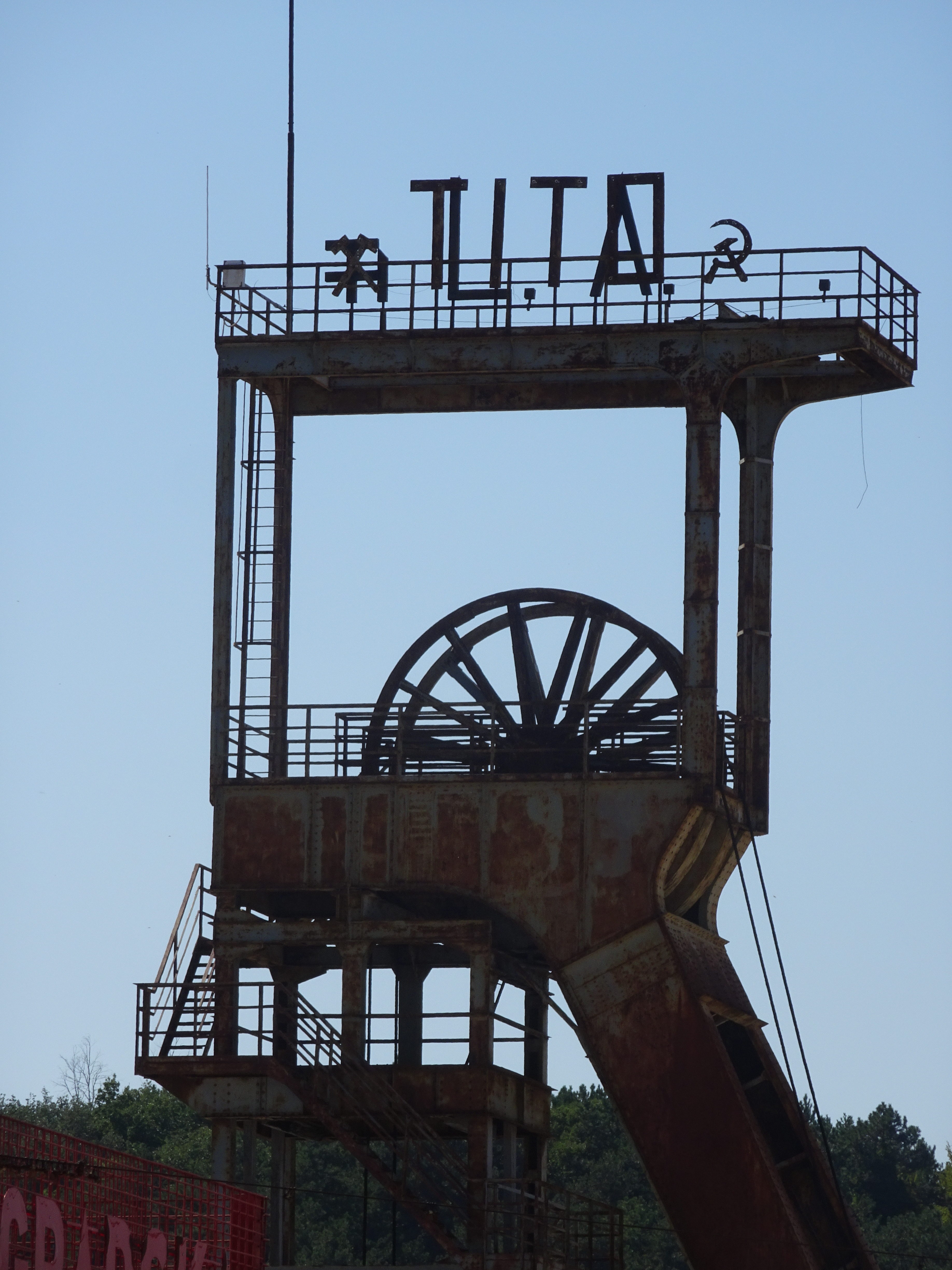


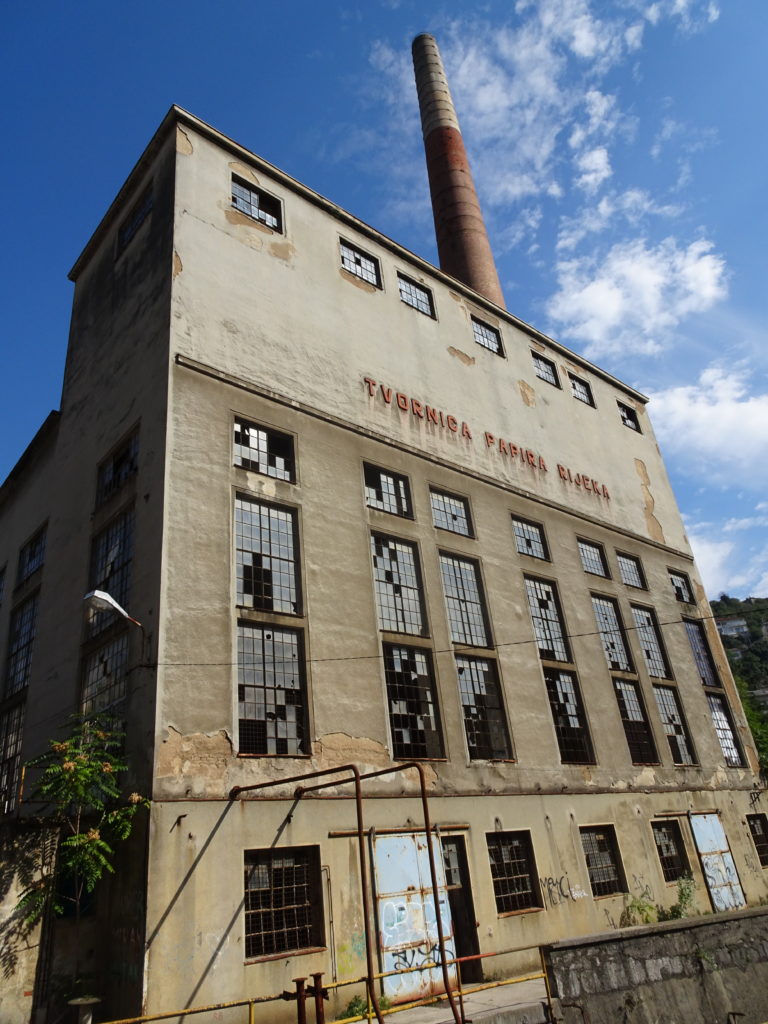



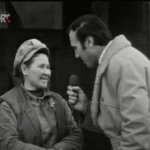
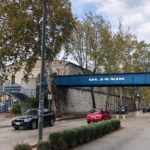

A WordPress Commenter
15. Oktober 2019 — 09:58
Hi, this is a comment.
To get started with moderating, editing, and deleting comments, please visit the Comments screen in the dashboard.
Commenter avatars come from Gravatar.